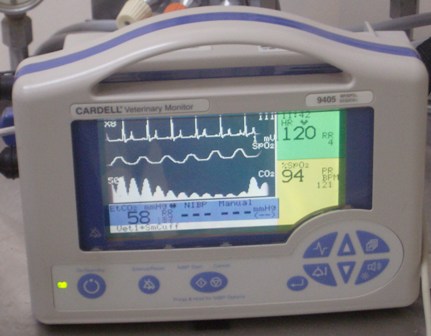
Making sure our patients remain safe during surgery and other medical procedures is extremely important to us. Our team of veterinarians and veterinary technicians is skilled in using anesthesia and monitoring patients to ensure their safety and provide the most comfortable experience. Anesthesia and patient monitoring vary greatly from clinic to clinic. You can be confident that we use the most effective and up-to-date protocols.
The type of anesthesia we use depends on the procedure. Some require general anesthesia, while others may only call for local anesthesia. We also closely monitor every procedure, regardless of whether it’s routine or more advanced. For more specific information on our protocols, please see the individual descriptions or contact us with any questions.
During general anesthesia, our patients are monitored closely by a registered animal health technologist for heart rate, respiratory rate, capillary refill time, oxygen saturation rate, ECG and blood pressure. A change in SPO2 or in blood pressure is an early indicator that a pet may be running into trouble. Monitoring blood pressure allows us to intervene earlier and prevent any anesthetic risk to your pet. The Cardel monitor allows us to chart and record your pet’s statistics every 4 minutes from the moment he or she is anesthetized to the time when he or she wakes up. These records are then permanetly attached as Excel files to the patients medical history. Please feel free to request a copy of your pet’s anesthetic chart.
